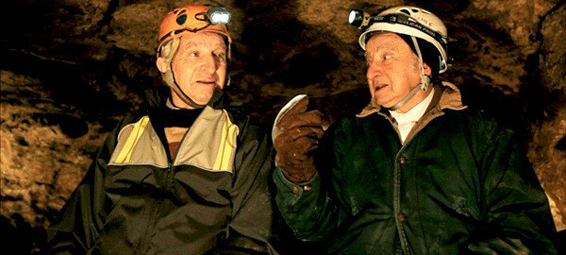“We’re not survivors. We’re fighters. We fought,” wrote Esther Stermer years later about her family’s struggles during the Second World War. I’d never thought of that distinction before in regards to those who suffered the horrors of the Holocaust, but there’s no doubt that that’s what many of them did. They fought for their lives.
Generations of the Stermers and a few dozen others Jews of a small Ukrainian village spent more than a year during the conflict living in underground caverns to hide from the occupying Germans and avoid being carted off to concentration camps or gas chambers. There was little food and water available, at times almost none. They spent days at a time in complete darkness, conserving their lights. Only a few of them were ever able to risk venturing to the surface to obtain whatever provisions they could beg for or steal.
The documentary No Place on the Earth mixes dramatizations of these years with recent interviews of those who lived through it. But first we meet an avid cave explorer, an American named Chris Nicola, who in 1993 stumbled across the mysterious detritus of everyday life left behind in the cave — buttons, shoes, combs, and such. He was driven to discover who these people were and why they lived in the cave.
Director Janet Tobias’ film doesn’t do a good job of explaining how it is that Nicola finally came to be contacted by a member of the Stermer family, in 2002. I also was often confused by who was doing what in the dramatic re-creations because it was difficult to keep straight all the people involved, let alone understand the motivation for some of their actions.
Still, it’s an impressive story of the limits to which human beings are capable of pushing themselves when the survival of themselves and their families hangs in the balance. Awful to witness, as are the many other atrocities of the Holocaust, and yet inspiring.






